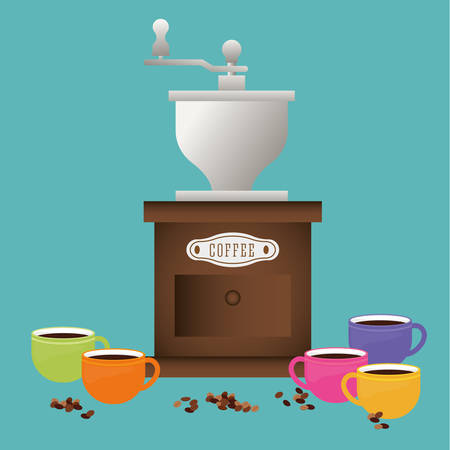A Brief Introduction: From Loose Leaf to Espresso Shot
If there’s one thing that unites the British Isles, it’s our steadfast devotion to a good cup of tea. From bustling London high streets to windswept Cornish cliffs, the ritual of brewing loose leaf and pouring from a cherished teapot is woven into the fabric of everyday life. Yet, as global tastes have shifted and cafés have cropped up on every corner, many of us are casting a curious eye toward the mysterious world of espresso. What is it about this Italian import—with its rich crema and intense aroma—that has captured the imagination of Britain’s most loyal tea drinkers? As we embark on this deep dive, we’ll explore how our love affair with tea has primed us for an appreciation of espresso, setting the stage for a journey from comfortingly familiar brews to bold new experiences in pressure brewing.
2. What Exactly Is Espresso? Demystifying the Italian Classic
For many Brits, coffee is a casual affair—perhaps a milky instant at your desk or a leisurely cafetière brew on Sunday mornings. But step into the world of espresso, and you’ll find yourself in an entirely different universe. This iconic Italian creation is not just a strong shot of coffee—it’s a meticulously crafted drink with its own language, rituals, and, crucially, brewing method.
Decoding Pressure Brewing
The essence of espresso lies in pressure brewing. Unlike traditional British tea-making, which relies on steeping leaves in hot water, espresso is made by forcing nearly boiling water through finely ground coffee under high pressure (usually around 9 bars). This rapid extraction—lasting only about 25 to 30 seconds—results in a concentrated, robust beverage with a unique character.
Espresso vs. Your Everyday Cuppa: Key Differences
| Espresso | Traditional British Tea/Coffee | |
|---|---|---|
| Brewing Method | Pressure (9 bars) | Steeping or gravity-fed drip |
| Brew Time | 25-30 seconds | 3-5 minutes (tea), 4-8 minutes (cafetière) |
| Coffee Grind Size | Very fine | Coarse to medium (for cafetière) or tea leaves/bags |
| Serving Size | 25-35ml shot | Mug or teapot serving (150-350ml) |
| Caffeine Content (per serving) | ~65mg per shot | ~40mg per cup (tea), ~80mg per mug (filter coffee) |
| Cultural Rituals | Quick, standing at the bar in Italy; focus on flavour and crema | Sitting down for a chat; milk and sugar are common additions |
The Magic of Crema: What Sets Espresso Apart?
No discussion of espresso would be complete without mentioning “crema”—that golden-brown frothy layer crowning each shot. Crema is formed by emulsified oils and carbon dioxide released during pressure brewing. For Italians, it’s the hallmark of a well-pulled espresso. For British tea drinkers unaccustomed to this visual flourish, crema signals that something quite extraordinary has been coaxed from those humble beans.
A New Kind of Ritual for British Palates
If brewing a proper cuppa is about patience and comfort, espresso offers an entirely different thrill—a jolt of flavour and aroma packed into just a few sips. Understanding these basics sets the stage for deeper appreciation as we journey further into the art of espresso making.
![]()
3. The Machinery: Of Kettles and Coffee Machines
Let’s face it, the heart of every British kitchen is the humble kettle—an icon of convenience, reliability, and that comforting whistle heralding the imminent arrival of a proper brew. In contrast, the Italian espresso machine, all gleaming chrome and mysterious dials, stands as a monument to continental sophistication and ritual. While the British kettle invites us to simplicity—a splash of water, a flick of the switch, and you’re moments away from a cuppa—the espresso machine demands precision: ground beans tamped just so, water pressure calibrated to perfection, and an artful eye for crema. This difference in gear speaks volumes about our national habits. For us Brits, tea is about ease, routine, and communal comfort; we gather ‘round for a natter over mugs warmed by boiling water. Espresso culture, on the other hand, is rooted in ceremony—the grind, the hiss of steam, each shot measured with an almost scientific reverence. Yet there’s an undeniable allure in both approaches. Whether it’s the reassuring clunk of a kettle lid or the hypnotic hum of an espresso machine at work, these tools shape our daily rituals and reflect our cultural quirks. As more British homes adopt sleek coffee kit alongside their trusty kettles, perhaps we’re witnessing a quiet revolution—one where pressure-brewed coffee finds its place beside our beloved builder’s tea.
4. Tasting Notes: Palate Training for the British Tea Drinker
If you’re a lifelong tea devotee, stepping into the world of espresso is akin to swapping a gentle stroll through Hyde Park for a brisk hike up Ben Nevis—exciting, bold, and just a touch intimidating. British tea culture prizes subtlety: the floral notes of an Earl Grey, the malty comfort of an Assam, or the crisp finish of a Darjeeling. Espresso, on the other hand, is unapologetically intense—a concentrated shot that can feel almost brash to those accustomed to the soft embrace of a “proper brew.” But with a bit of palate training, any seasoned tea drinker can learn to appreciate this continental classic.
Comparing Flavour Profiles: Tea vs Espresso
| Traditional British Tea | Espresso | |
|---|---|---|
| Aroma | Delicate, floral, malty | Rich, roasted, sometimes fruity or nutty |
| Taste | Smooth, subtle layers; often mellow bitterness | Intense; strong bitterness balanced by sweetness and acidity |
| Body | Light to medium; often silky | Full-bodied; thick and syrupy (think “crema”) |
| Finish | Cleansing, lingering but gentle | Lingering; may be sharp or chocolatey |
Palate Training Tips for Tea Drinkers
- Sip Slowly: Like savouring a fine single estate tea, take small sips of espresso. Let it coat your tongue and notice how flavours evolve—chocolate, citrus, even hints of spice.
- No Milk (at First): Try your espresso black before adding milk. This is like appreciating a loose leaf Ceylon before reaching for the jug—only then do you unlock its full character.
- Cleansing Between Sips: Use water as you would when tasting teas in succession. It helps reset your palate and reveals more nuances in each cup.
The Art of Noticing
British tea drinkers have an edge: our knack for detecting subtle differences between blends translates beautifully to espresso appreciation. Take note of mouthfeel (is it velvety or bright?), aftertaste (does it linger pleasantly?), and complexity (are there unexpected layers?). In time, you’ll find that both a builder’s brew and a well-pulled ristretto offer their own pleasures—they simply sing in different keys.
5. Café Culture: Sitting Down with Espresso in the UK
In Britain, the ritual of sitting down with a hot beverage is practically a birthright—traditionally reserved for tea, of course. But as espresso has percolated into the national consciousness, it’s found its own unique place at British tables and counters. Walk into any high street café from Brighton to Edinburgh, and you’ll spot locals perched by the window or gathered around small tables, savouring their tiny cups of potent espresso with an air of quiet contemplation or animated chatter.
While the Italian custom favours a quick stand-up shot at the bar, the British approach to espresso leans towards leisure. It’s not uncommon to see a single espresso stretched out over conversation or paired with a sweet treat—a nod to our love of an afternoon pick-me-up. The cup may be small, but the moment is often unhurried.
What’s more, Britain’s cosmopolitan café culture has given rise to inventive expressions: think espresso served alongside shortbread biscuits, or enjoyed as part of a “coffee flight” that invites sampling and discussion. In many artisan coffee houses, you’ll even find baristas eager to chat about roast profiles and pressure brewing, turning a simple order into a mini masterclass.
This growing affection for espresso hasn’t replaced our beloved tea breaks—it’s simply added another layer to our social rituals. Whether you’re meeting friends after work or seeking solace on a rainy afternoon, sharing an espresso in Britain is now as much about connection and atmosphere as it is about caffeine. As British tastes evolve, so too does the art of lingering over that perfectly pulled shot.
6. Home Brewing: Bringing Espresso into the British Kitchen
For the tea devotee peering curiously across the channel of tradition, the prospect of brewing espresso at home can feel both thrilling and slightly intimidating. Yet, just as you might fine-tune your Earl Grey with a splash of milk or a slice of lemon, bringing espresso into your British kitchen is about embracing experimentation while honouring ritual. Here’s a guide to help you take your first confident steps from kettle to portafilter.
Choosing Your Kit: From Stove Tops to Gadgets
If you’re new to espresso, there’s no need to invest in a barista-grade machine straight away. Classic Italian stovetop moka pots are a gentle introduction—affordable, compact, and well-suited for those who appreciate a hands-on brewing process akin to steeping loose leaf tea. If you fancy something flashier, entry-level pump machines now abound on the high street, offering an authentic pressure-brewed experience without the price tag of professional gear.
The Beans: Freshness is Everything
Just as a fine Darjeeling demands respect for its leaves, espresso rewards freshness. Seek out locally roasted beans or trusted independent coffee shops; ask for their recommendation for espresso blends. Grind your beans just before brewing if possible—the difference in aroma and flavour is remarkable and not unlike savouring freshly brewed tea over a teabag.
The Method: Patience and Precision
Espresso is less forgiving than a hearty builder’s brew; precision matters. Use filtered water for best results, weigh your grounds (about 18-20 grams for a double shot), and tamp evenly. Don’t be discouraged by your first attempts—like learning the proper way to pour milk into tea, mastery comes with practice.
Tips for Beginners
- Start simple: Don’t be seduced by overly complicated recipes at first—a classic espresso or small flat white is ideal for learning.
- Mind your timings: Aim for a 25-30 second extraction. Too fast or slow? Adjust your grind size accordingly.
- Cleansing ritual: Just as you’d rinse your teapot, keep your equipment spotless—old grounds spoil fresh brews.
- Savour the process: Allow yourself to enjoy the ritual as much as the result; watch the crema form, inhale deeply, and sip slowly.
Welcoming espresso into your home isn’t about abandoning tea—it’s about broadening your palate and embracing another proud tradition of hot beverage artistry. Whether it becomes a morning staple or an occasional treat, this new adventure will add another layer of pleasure to your daily kitchen rituals.
7. Final Sips: Espresso Encounters for the Tea Devotee
As my journey through the robust, aromatic world of espresso draws to a close, I find myself reflecting on the unexpected kinship between Britain’s cherished tea rituals and the continental allure of pressure-brewed coffee. There’s a certain poetry in the way both drinks punctuate our days — a strong morning pick-me-up or a meditative afternoon pause — each with its own ceremony and social gravitas. While I arrived as a dyed-in-the-wool tea drinker, equipped with an arsenal of loose leaf blends and a penchant for perfectly-timed steeping, I depart with newfound respect for the espresso’s bracing intensity and craftsmanship. Embracing both worlds doesn’t mean abandoning one for the other; rather, it’s about expanding the boundaries of ritual and taste. Perhaps there’s room on our kitchen counters for both an elegant teapot and a gleaming stovetop moka pot, waiting side by side to fuel new habits and shared moments. In this embrace of variety, I’ve discovered that being British isn’t just about loyalty to tea — it’s about appreciating the artistry behind every cup, whether infused or extracted under pressure. So here’s to new rituals: the gentle pour of Darjeeling at dawn, and the sharp snap of espresso after supper — proof that even long-standing traditions can make room for fresh flavours and bold encounters.


